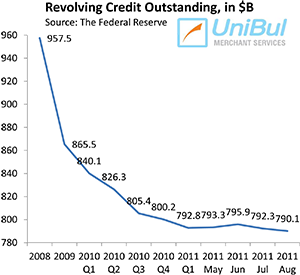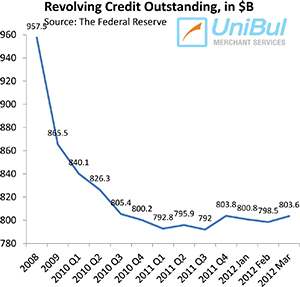Virtual Terminal Credit Card Processing

We have written multiple times on this blog about payment gateways, which enable e-commerce merchants to connect their websites’ shopping carts to their processors’ payment systems. We have neglected, however, to review another service that is used by merchants accepting payments in a non-face-to-face environment, often concurrently with a payment gateway, but more often on its own. This article will do just that.
Virtual Terminal Basics
Virtual terminal is a generic term used to describe a service that gives a user a direct access to a processing bank‘s payment system, allowing him to manually process payments by key-entering transaction information into a payment form from within his browser.
It is very similar to the service used by utility companies to enable customers to pay their bills online. For example, if you wanted to pay your cell phone bill online, you would log into your account on your services provider’s website and would then provide your credit card account information to make a payment. The virtual terminal works in exactly the same way, with the only difference being that instead of your own personal information, you would be entering your customer’s instead.
How Does a Virtual Terminal Differ from a Payment Gateway?
As I mentioned before, both the virtual terminal and the payment gateway are services used to facilitate payments in card-not-present environment. However, they perform two distinctly separate functions.
Payment gateways are used for processing e-commerce transactions, where the customers themselves key-enter their payment information on the merchant’s website. Once that is done, the payment gateway collects the provided information and transmits it to the processor. Virtual terminals, on the other hand, are used to facilitate payments where the merchant himself key-enter his customer’s payment information directly onto his processor’s server, after receiving it by phone or in another way.
Typically, payment gateways come with a virtual terminal built-in, so that e-commerce merchants have the option available to them, if they need it.
What Types of Payments Can Be Processed through a Virtual Terminal
Virtual terminals can be configured to enable acceptance of the following payment types:
- Payment cards. Virtual terminals are most commonly used for processing bank card payments, e.g. credit, debit, ATM, check, prepaid cards, etc.
- ACH payments. Some virtual terminals, including Authorize.Net, support ACH payment acceptance, i.e. payments directly debited from the payee’s checking account. If you need ACH acceptance, make sure you ask your prospective processor whether the virtual terminal they are offering you supports the option, as most do not.
- Recurring payments. This is another option that will typically not be set up by default and is not supported by some virtual terminals. Some processors may require signing additional paperwork, before enabling you to process recurring payments.
Who Uses Virtual Terminals?
Virtual terminals are most often used by direct marketers. These are merchants who accept orders by phone or mail and are referred to as MO / TO, which stands for “mail order / telephone order.” Virtual Terminals are also commonly used in fund raising drives. For example, when you call in your annual PBS donation, the person who accepts your pledge enters your payment details into a virtual terminal.
How Much Does a Virtual Terminal Cost?
As with all other services used for processing payments, the cost of a virtual terminal can vary widely. Moreover, the overall cost of the service is comprised of several components, as follows:
- Set-up fee. Most processors will not charge you such a fee, however many still do and it can range wildly.
- Monthly fee. Most processors will charge you a monthly fee, typically between $10 – $30, but some will not.
- Authorization fee. Most processors charge authorization fees, typically $0.10 per transaction. Be advised that, if you get your virtual terminal from a vendor, e.g. Authorize.Net, but sign up for a merchant t account with another processor, you will probably be charged authorization fees by both.
The discount rate and all other merchant account fees will be separate from the ones listed above.
Image credit: Hospitalunimedcpv.com.br.



Interested to operate Virtual Terminal for Internet credit cards payment processing
Hello David,
Please fill out our Virtual Terminal information form and we will respond with full details.
how do i fill up the application form???